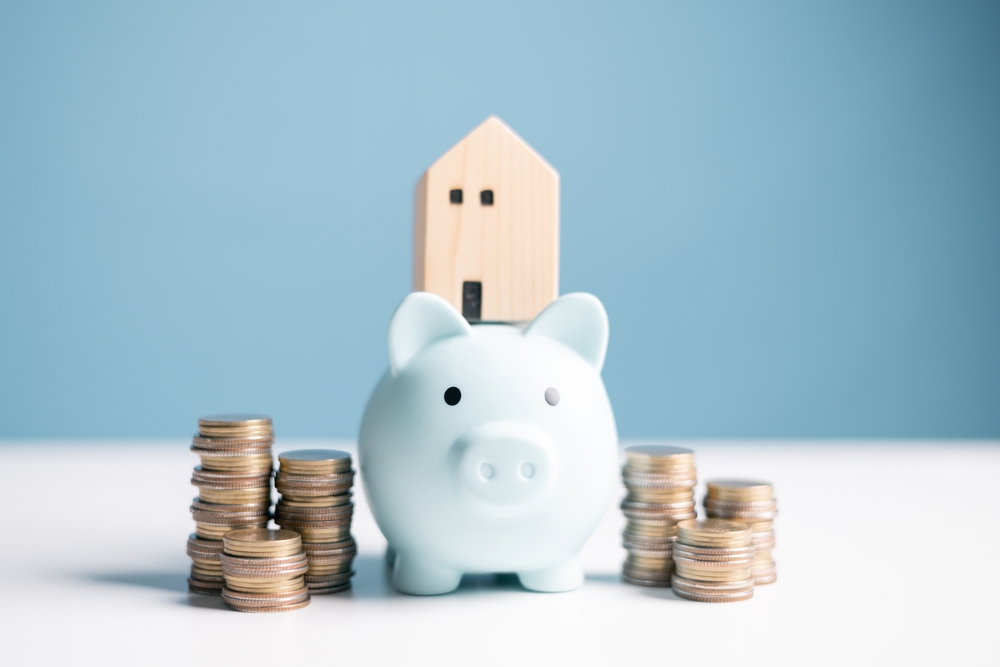Owning a home isn’t just about having a place to live—it’s one of the biggest financial assets most of us will ever hold. And while the market might fluctuate, the choices homeowners make every year can either build long-term wealth or chip away at it. The smartest homeowners know their property isn’t just shelter—it’s an investment vehicle with the potential to grow, generate income, and even fund future goals.
Maximizing that potential takes strategy, though. From upgrades that add real value to money moves that cut costs and increase equity, there are proven ways to make your home work harder for you. Here are 13 smart financial strategies homeowners are using right now to get the most out of their investment—and how you can do the same.
1. They’re Staying On Top Of Renovation Trends That Pay Off

Trends in home design and renovation come and go, so it’s wise to approach them thoughtfully. While it can be tempting to chase the latest styles, consider how they align with your long-term vision for your home. Classic designs often offer more timeless appeal and can increase your home’s resale value. Ensure that any updates are not only stylish but also practical and enduring.
Balance is essential when integrating trends into your home. Opt for smaller, easily changeable elements like paint colors or accessories to reflect current styles. For substantial investments, prioritize functionality and quality over fleeting fashion. Keep future buyers in mind, as overly personalized modifications can limit your home’s market appeal. It’s about creating a space that reflects your taste while maintaining broad appeal.
2. They’re Shopping Around For Home Insurance

Insurance is a necessary part of homeownership, but it doesn’t have to break the bank. It’s a good idea to review your policy annually to ensure you’re getting the best deal. Compare quotes from multiple providers and consider bundling with other insurance policies for discounts. Ensure that you have adequate coverage but not more than you need; over-insurance can be a costly mistake.
Additionally, ask your insurer about discounts for security features like smoke detectors and alarm systems. Improving your home’s safety can lower the risk in the eyes of insurance companies, leading to better rates. Some companies also offer loyalty discounts, so be sure to inquire about any available options. Don’t forget to reassess your coverage needs periodically as your circumstances change. The goal is to strike a balance between savings and sufficient protection.
3. They’re Refinancing Their Mortgage

With interest rates fluctuating, keeping an eye on them can present opportunities for savings. If rates drop significantly below your current rate, you might benefit from refinancing your mortgage. Financial advisor Karen McGrath suggests considering refinancing if you can reduce your rate by at least 1%. This could lower your monthly payments, giving you more financial flexibility.
Remember that refinancing isn’t free; you’ll need to consider closing costs and other fees. However, if the long-term savings outweigh these costs, it could be a smart move. Additionally, refinancing can help you build equity faster if you opt for a shorter loan term. Look at your long-term goals and make sure refinancing aligns with them. It’s all about making your mortgage work in your favor.
4. They’re Keeping Up Their Home Maintenance

Routine maintenance can prevent costly repairs down the line. Make a checklist of tasks to tackle throughout the year, such as cleaning gutters and servicing HVAC systems. This ongoing care helps keep your home in top shape and catches issues before they become bigger problems. Remember, a well-maintained home is not only safer but also holds its value better.
In the long run, regular maintenance can save you money and stress. Set reminders for seasonal tasks and stick to your schedule to avoid neglect. You might also consider setting aside a budget for maintenance to ensure you’re prepared for any unexpected expenses. Prevention is key when it comes to homeownership, and it starts with a proactive approach. Your future self will thank you.
5. They’re Utilizing Smart Home Technology

Smart home technology is more than just a convenience; it’s a tool for savings. Devices like smart lights and plugs can reduce energy use by only operating when needed. According to technology specialist James Carroll, integrating smart home devices can cut energy costs by up to 15%. This not only lowers your bills but also adds to the home’s appeal for potential future buyers.
Moreover, smart tech can streamline daily tasks, such as locking doors or adjusting lighting remotely. This added layer of security and efficiency means less worry and more peace of mind. While the initial investment may seem high, the long-term savings and convenience make it worthwhile. Don’t overlook the potential of technology to enhance your home’s efficiency. Consider what devices align with your lifestyle and budget.
6. They’re Landscaping Thoughtfully

Your yard doesn’t just add curb appeal; it can also impact your home’s efficiency. Thoughtful landscaping can provide natural shade, reducing cooling costs in the summer. Planting trees strategically around your property can be a cost-effective measure. Native plants require less water and maintenance, which means lower utility bills and less work for you.
A well-planned garden can also enhance your home’s value and attractiveness. Consider edibles like a vegetable garden, which can reduce grocery bills and provide fresh produce. Proper care and planning can make your outdoor space both beautiful and functional. It’s a small investment of time and resources for significant returns. Think of your landscape as an extension of your home, contributing to its efficiency and enjoyment.
7. They’re Leveraging Tax Deductions

As a homeowner, you have access to various tax deductions that can ease your financial burden. Mortgage interest and property taxes are often deductible, offering considerable savings. According to tax expert Linda Ramirez, taking advantage of these deductions can significantly reduce your taxable income. Be sure to keep detailed records and consult with a tax professional to maximize your savings.
Additionally, home office expenses may be deductible if you work remotely. This can include a portion of your utility bills, internet, and even home repairs. It’s crucial to understand the requirements and keep thorough documentation. With the right approach, tax season can become an opportunity rather than a source of stress. Ensure you’re taking full advantage of every deduction available to you.
8. They’re Investing In Quality Stuff That Lasts

When it comes to home improvements, it’s tempting to cut corners to save money. However, investing in quality materials and craftsmanship can pay off in the long run. High-quality upgrades often mean fewer repairs and replacements down the line. Consider durability and longevity when making decisions about renovations or new purchases.
Think about the return on investment for each improvement you make. Kitchens and bathrooms tend to offer the best returns; however, ensure that these updates align with your overall style and budget. Don’t overlook the importance of aesthetic appeal in addition to functionality. Sometimes, spending a little more upfront can lead to bigger savings later. Prioritize projects that enhance your home’s value and longevity.
9. They’re Being Strategic With DIY Projects

DIY projects can be a fun and cost-effective way to improve your home, but it’s essential to know your limits. Tackling certain tasks yourself can save money, but others might require a professional’s touch. Evaluating your skills and the complexity of the project is crucial. Focus on projects like painting or landscaping that fit your skill set and save the more complex tasks for the experts.
Remember, mistakes can be costly, often leading to higher expenses than anticipated. Start with smaller projects to build your confidence and expertise. As you gain experience, you can tackle more challenging tasks with a better understanding of what they entail. Balance your enthusiasm with a realistic assessment of your abilities. A thoughtful approach to DIY can lead to rewarding and economical home improvements.
10. They’re Planning For Unexpected Costs

Owning a home comes with inherent unpredictability, and unexpected costs are part of the package. Creating an emergency fund for these occurrences can provide peace of mind. Aim to set aside at least three to six months’ worth of expenses for emergencies. This fund can cover unforeseen repairs or temporary loss of income, ensuring you’re not caught off guard.
Incorporate this savings into your budget as a regular expense. Consider using a high-yield savings account to help your funds grow while remaining accessible. The key is to start small and contribute consistently, making it an automatic part of your financial routine. An emergency fund is a safety net that protects your home and financial well-being. It’s an investment in stability and resilience.
11. They’re Maximizing Their Energy Efficiency

Start by evaluating your home’s energy efficiency. Drafty windows and outdated appliances can lead to high utility bills. Consider upgrading to energy-efficient models and sealing any air leaks. According to energy expert Cynthia Adams, homeowners can save up to 30% on their energy bills with these adjustments. Not only will you save money, but you’ll also contribute to a more sustainable environment.
Once your home is sealed tight, consider investing in a smart thermostat. These devices learn your schedule and adjust temperatures accordingly, optimizing energy use. By managing energy consumption more effectively, you can see a noticeable reduction in your monthly bills. Additionally, look for rebates and tax incentives for energy-efficient home improvements. Every little bit helps balance the upfront costs.
12. They’re Taking Advantage Of Loyalty Programs

Many home improvement stores and service providers offer loyalty programs that can lead to significant savings. These programs might include discounts, special offers, or rewards that accumulate with each purchase. Sign up for these programs to benefit from exclusive deals and promotions. It’s a straightforward way to save on everything from supplies to services.
Keep track of your points or rewards and know the best times to redeem them. Some programs offer additional savings during seasonal sales or special events. This can be especially beneficial for larger purchases or renovation projects. Remember to read the terms and conditions to maximize your benefits. Loyalty programs can turn routine purchases into opportunities for savings.
13. They’re Leaning Into Their Community Network

Building a network with neighbors and local homeowners can be a valuable resource for sharing information and resources. This community can offer insights into trusted service providers, cost-saving tips, and even tool-sharing opportunities. Engaging with others in your area can lead to shared services, reducing costs for everyone involved.
Consider starting or joining a local homeowners’ association or neighborhood group. These networks often facilitate bulk-purchasing discounts or shared resources like lawn equipment. They also provide a platform for discussing common concerns and finding collective solutions. A strong community network can enhance your homeownership experience and lead to unexpected savings. It’s about fostering connections that benefit everyone.
This article is for informational purposes only and should not be construed as financial advice. Consult a financial professional before making investment or other financial decisions. The author and publisher make no warranties of any kind.








